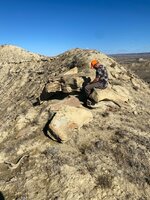hibernation
WKR
Adding to this: I practice enough that I have a pretty good idea how my group size changes with different shooting positions, what MOA I can typically maintain. That's my starting point for checking with single shots where I'll have to add in wind, elevation, and ideally, some time pressure. I want to be able to consistently hit an 8" steel with my hunting setup from actual hunting positions, that's my check on what shots I can confidently take as I lead up to hunting season.Sure, but what exactly would you do? I see a lot of guys go to the range and check the rifle zero at 100 yards and then go hunting (and presumably taking shots beyond 100 yards). What do you do to decide where to draw the line?

